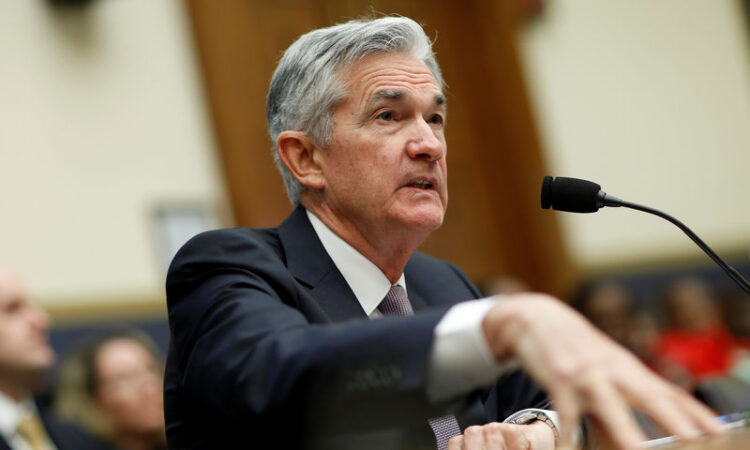
By Ambar Warrick
Investing.com — The U.S. dollar hit a three-month high against a basket of currencies on Wednesday, tracking a spike in Treasury yields after Federal Reserve Chair Jerome Powell said that interest rates were likely to rise more than market expectations.
The dollar index and dollar index futures rose about 0.2% each in Asian trade, hitting their highest levels since early-December. The two instruments also surged about 1.3% on Tuesday.
Powell said in a testimony before Congress that the Fed is likely to raise interest rates more than market expectations, following recent resilience in the U.S. economy. This saw markets rapidly begin pricing in a greater chance of 50 basis point hike in March, up from prior expectations for a rise of 25 bps.
U.S. Treasury yields also surged in overnight trade, with a bias towards short-term yields. This in turn caused a further deepening in the yield curve, with spreads between two-year and 10-year yields close to their lowest level since October.
Two-year yields also surged past 5% for the first time since 2007.
Powell’s comments come after stronger-than-expected inflation and labor market readings for January showed that the Fed likely needed to tighten policy further to ensure a sustained downtrend in inflation.
The central bank hiked rates by a cumulative 450 basis points since March 2022 to an upper range of 4.75%, which had seen market positioning for a terminal rate – i.e., a peak – of around 5.5%.
But with inflation still showing signs of stickiness, markets are now positioning for rates potentially breaching 6%.
Focus this week is largely on more cues on the Fed and the labor market, with the central bank’s Beige Book report on the economy due later on Wednesday.
Nonfarm payrolls data for February is due on Friday, with any signs of strength in the economy giving the Fed more headroom to keep raising rates.
Rising interest rates have drummed up fears of a sharp slowdown in the U.S. economy later this year. An inverted yield curve is regarded by markets to be a classic signal that traders are positioning for a potential recession .
Get The App
Join the millions of people who stay on top of global financial markets with Investing.com.
Download Now






